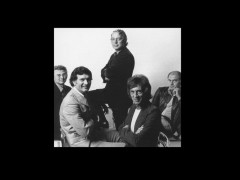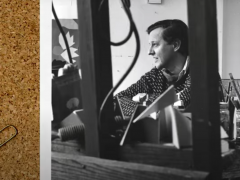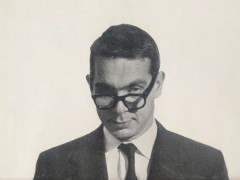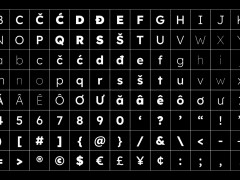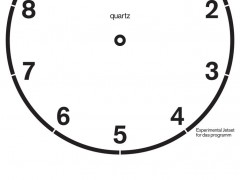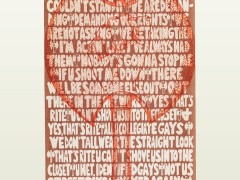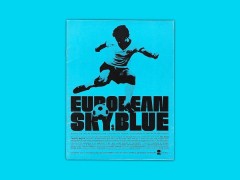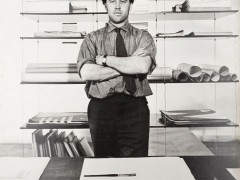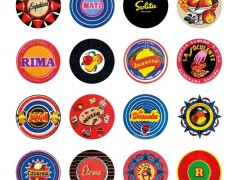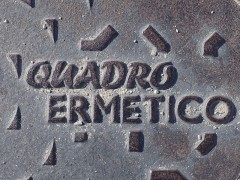Tokyo 1964: the emblem, the posters, the pictograms & the film that changed the Olympics forever
On the occasion of Olympic Day, celebrated each year on the 23rd of June, we dive deep into the branding of the world’s biggest sports event as a reminder of the trailblazing work of Yusaku Kamekura and his team of designers that forged the path to today’s sports branding and beyond.
Designed in 1913 by Pierre de Coubertin, the Olympic symbol with the five rings that signify the universality of the Olympics and the union of the five continents, was first displayed on a white flag flown during Antwerp’s 1918 Olympics. The foundation of the Olympics visual identity was born and almost half a century later, in post-war Japan, a masterpiece happened.
Seminal in rebranding Japan’s post-war identity, the 1964 Tokyo Games were the first to be held in Asia. With acclaimed Japanese graphic designer and the leading figure in post-World War II Japanese graphic design scene, Yūsaku Kamekura whose stature in the field led to the nickname “Boss” on board, the design team of Tokyo Summer Games 1964 introduced the international appeal of modernism as bold typography is coupled with strong imagery and revolutionized the visual codes of conduct with the extensive use of a language-barrier breaker aka the pictograms.
Modern even by today’s standards, the iconic emblem of the games features a large red circle on a white background that hovers above the already established logo of the Olympics. Underneath a bold, gold sans serif typeface reads “Tokyo 1964.” Boom!
Almost two years ago, on the occasion of the 2020 Tokyo Olympics the exhibition “Tokyo 1964: Designing Tomorrow” at Japan House London. The exhibition showed “how a group of young Japanese designers and architects harnessed the opportunity presented by the 1964 Olympic Games to reframe the country’s profile and tell a fresh story to the world. Their ground-breaking designs are important as they have informed the design principles of all subsequent major international sporting events.”
“The design of these Games influenced every international sporting tournament since, from the pictograms to the idea of a brand” explained Simon Wright, curator and programme director at Japan House London.
Kamekura's logo and poster series he designed for the 1964 Summer Olympics, were reportedly created only a few hours before the design competition deadline. Kamekura eschewed the classical imagery traditionally associated with the Olympics in favor of a stark, modernist aesthetic, featuring the Olympic rings in simple gold below a red circle.
According to the article, Rebuilding the Japanese Nation at the 1964 Tokyo Olympics, Satoshi Shimizu quotes Kamekura as saying:
“I drew a large red circle on top of the Olympic logo. People may have considered that this large red circle represented the Hinomaru (Japan’s national flag), but my actual intention was to express the sun. I wanted to create a fresh and vivid image through a balance between the large red circle and the five-ring Olympic mark. I thought that it would make the Hinomaru look like a modern design” explained Kamekura who coupled his country’s tradition with a international appeal of modernism. After all the sun plays an important role in Japanese mythology and religion as the Emperor is said to be the direct descendant of the sun goddess Amaterasu and the legitimacy of the ruling house rested on this divine appointment and descent from the chief deity of the predominant Shinto religion.
There was a total of four official posters, all designed by Yusaku Kamekura. They were all made by photoengraving using several colours, highlighting the technology of the Japanese printing industry. The posters themselves received a number of prizes for their excellence, including the Milan Prize for poster graphics.
The most memorable of Kamekura's Olympic posters captured a group of runners immediately after the start of a race, against a stark black background. Kamekura was the first to employ photography for Olympic posters and this poster required split-second photography that was technically difficult to accomplish at the time.
These trailblazing “classics of modern poster design” established minimalism as a massive trend in the visual language and even introduced the global appeal of Helvetica which had its first major international outing to the world.
Yet the absolute seminal design element in Tokyo 1964 was the massive introduction of sports pictograms that were introduced to the world. With the Olympic Games, Japan needed to speak to a global audience. Looking for a way to transcend language—given the sui generis nature of the Japanese alphabet—Japanese graphic designers came up with an ingenious graphical system that was unique, clear and modern, a coordinated set of symbols devised to communicate with international visitors who couldn’t speak Japanese. The origin of modern simple, wordless icons can be traced back to the 1964 Tokyo Olympic Games, literally.
The team behind the 1964 pictograms was headed by artistic director Masaru Katzumie and graphic designer Yoshiro Yamashita. Their goal behind these contemporary hieroglyphics was to create the beginnings of a global picture-based language designed specifically for sporting events. Inspired by Austrian graphic designers Otto Neurath and Gerd Arntz’s isotypes the team created 39 facilities pictograms, while Yamashita’s 20 sports symbols helped visitors seek out specific events.
This highly detailed set formed a universal language that would evolve over the years with Otl Aicher’s iconic symbols for the Munich 1972 Games being a classic on their own.
Designer, fighter, thinker: celebrating Otl Aicher's impressive legacy with 100 posters
“Creating symbols which are not letters but graphic illustrations that everyone can understand goes back much further than that” explains Markus Osterwalder, the Secretary General of the International Society of Olympic Historians, specialising in the graphic and general design of each edition of the Games.
“I’ve found small pictograms that were at the Games in Stockholm in 1912, Paris in 1924, and other Games after that; but they did not yet offer that very simple and clear view that we know today” he notes but the team of designers who worked on the Summer Games in Tokyo in 1964 did a lot to shape the system what we know today.
“They reduced the shapes and sizes to the minimum needed to understand the message. The Japanese were faced with the problem of language. Nobody speaks Japanese outside Japan. So they really had to find something that would work for all the people from other countries. A non-verbal system. Take the emblem of these Games, for example [a red disc above the Olympic rings and the words Tokyo 1964]. It is so simple, if you tried to remove any part of it, it would no longer work. They invented a very simple new language, and a totally new form of graphic design. They used sports photography for the first time, and typographic unity as a graphic element. That had never happened before. Tokyo 1964 had brilliant designers, who knew what they wanted to do and did some fantastic work. It was Tokyo 1964, for example, that invented the pictogram for men’s and women’s toilets.”
For the Swiss Olympic design historian, “the first use of pictograms was to give people a message, without their having to read anything. To go to the Olympic Park or the various venues, and say, ah right, there’s the press room, there’s such-and-such a venue, etc. All these pictograms for signage and the sports are the Games guides. Without them, just imagine how many languages you would need to use for everyone to understand. Pictograms make things much simpler!”
The long history of Olympic typography, a debate
Even the Tokyo 1964 official film is a groundbreaking visual fest. A cinematographic milestone in documentary filmmaking, Kon Ichikawa treated the 1964 event with an intensely humanist vision, dwelling not just on the effort and commitment of individual athletes but also on the experience of spectators and competitors alike.
Tokyo Olympiad keeps its focus far more on the atmosphere of the games and the human side of the athletes rather than concentrating on winning and the results and it is one of the few sports documentaries included in the book 1001 Movies You Must See Before You Die.
Using the 'scope format, his team of cameramen brought their telephoto lenses to bear on some of the greatest medallists of the modern era, from Bob Hayes and Dawn Fraser to Abebe Bikila and Joe Frazier, with superb editing and sound recording.
With its pioneering design strategy Tokyo 1964 lasting legacy back, from the emblem to the posters through the pictograms and the movie, is made of design gold.
Tags/ helvetica, posters, logo, branding, modernism, japan, tokyo, olympics, pictograms, tokyo olympics, sports


